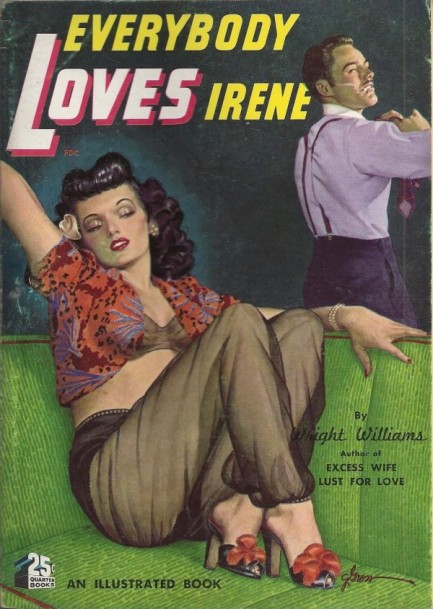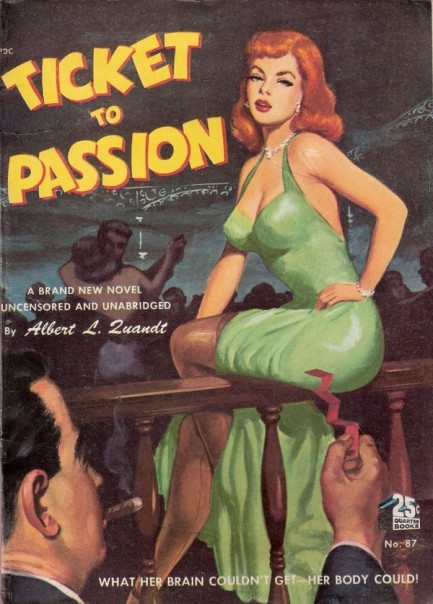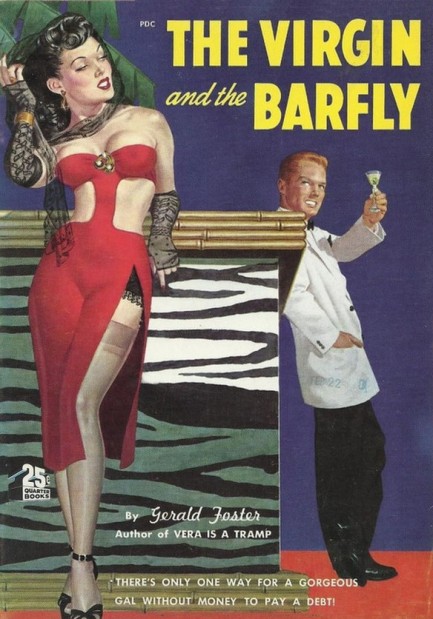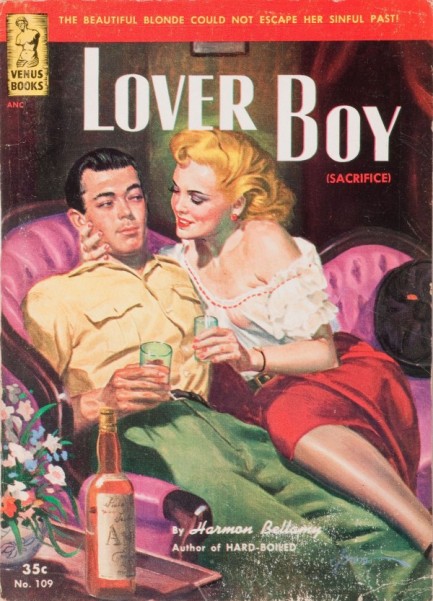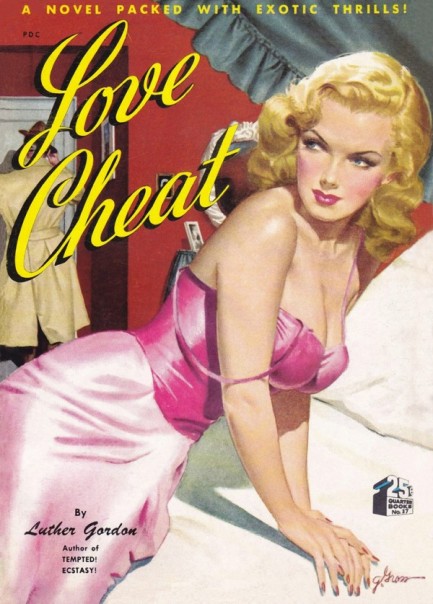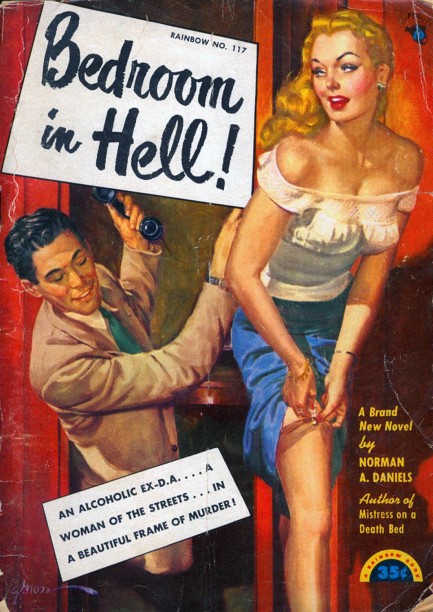 Alarms, security, police... As a master jewel thief I thought I'd considered every possible obstacle. Just goes to show. 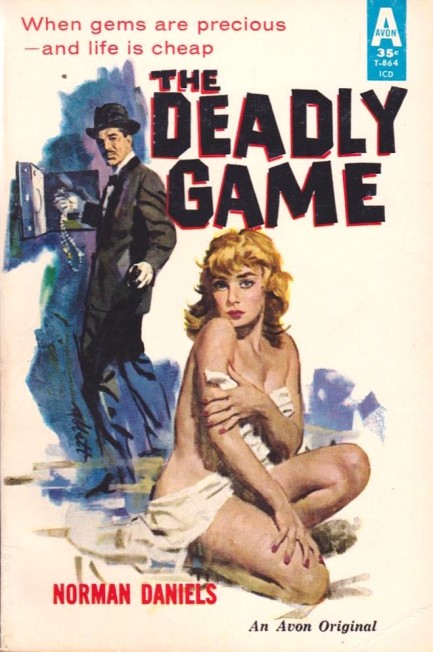
This Avon Publications cover for The Deadly Game by Norman Daniels was painted by Bob Abbett. The book has a promising premise, though there's no nude that interrupts a safe cracking. The story concerns a high society jewel thief who's being constantly dogged by a determined police detective, and who decides to get revenge by bedding the cop's wife, then, for good measure, implicating her in his next heist. It's revenge to the nth degree—cuckold the cop, further humiliate him by succeeding with the crime, then railroad his wife to prison. We're talking cruel. Too bad this one is undone by substandard writing. But it wasn't bad enough to stop us from sticking with it until the end and finding out how it all resolved. If you find it for five bucks or less, it's probably worth taking the plunge.
 Then I picked up something at the market and now I'm about to heat it up and enjoy it. How's your day going? 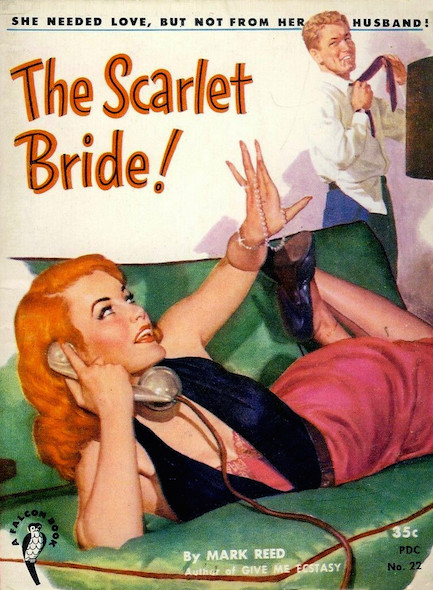
Above, a cover for The Scarlet Bride by Mark Reed, about a cheating wife with a dangerous husband and the horndogs who risk life and limb to get on her. Reed was actually Norman A. Daniels, a prolific author who wrote for pulp magazines, where he created the character Black Bat (the second, more popular one). He also wrote for radio, television, and once published eighteen books in a two year span. This particular effort is copyright 1952.
 Say handsome, you wanna play connect the dots? 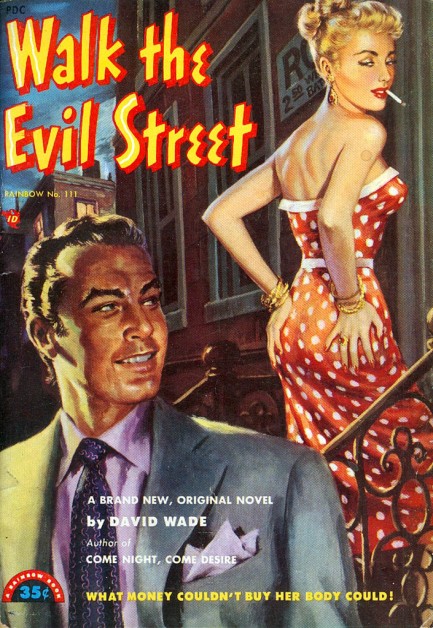
Above, a truly excellent cover for David Wade’s, aka Norman A. Daniels' Walk the Evil Street, published in 1960. Rainbow Books had a habit of not crediting art, so we have several suspects for this one, but sadly, no perpetrator.
|
 |

The headlines that mattered yesteryear.
1933—The Gestapo Is Formed
The Geheime Staatspolizei, aka Gestapo, the official secret police force of Nazi Germany, is established. It begins under the administration of SS leader Heinrich Himmler in his position as Chief of German Police, but by 1939 is administered by the Reichssicherheitshauptamt, or Reich Main Security Office, and is a feared entity in every corner of Germany and beyond. 1937—Guernica Is Bombed
In Spain during the Spanish Civil War, the Basque town of Guernica is bombed by the German Luftwaffe, resulting in widespread destruction and casualties. The Basque government reports 1,654 people killed, while later research suggests far fewer deaths, but regardless, Guernica is viewed as an example of terror bombing and other countries learn that Nazi Germany is committed to that tactic. The bombing also becomes inspiration for Pablo Picasso, resulting in a protest painting that is not only his most famous work, but one the most important pieces of art ever produced. 1939—Batman Debuts
In Detective Comics #27, DC Comics publishes its second major superhero, Batman, who becomes one of the most popular comic book characters of all time, and then a popular camp television series starring Adam West, and lastly a multi-million dollar movie franchise starring Michael Keaton, then George Clooney, and finally Christian Bale. 1953—Crick and Watson Publish DNA Results
British scientists James D Watson and Francis Crick publish an article detailing their discovery of the existence and structure of deoxyribonucleic acid, or DNA, in Nature magazine. Their findings answer one of the oldest and most fundamental questions of biology, that of how living things reproduce themselves. 1967—First Space Program Casualty Occurs
Soviet cosmonaut Vladimir Komarov dies in Soyuz 1 when, during re-entry into Earth's atmosphere after more than ten successful orbits, the capsule's main parachute fails to deploy properly, and the backup chute becomes entangled in the first. The capsule's descent is slowed, but it still hits the ground at about 90 mph, at which point it bursts into flames. Komarov is the first human to die during a space mission.
|

|
|

It's easy. We have an uploader that makes it a snap. Use it to submit your art, text, header, and subhead. Your post can be funny, serious, or anything in between, as long as it's vintage pulp. You'll get a byline and experience the fleeting pride of free authorship. We'll edit your post for typos, but the rest is up to you. Click here to give us your best shot.

|
|





